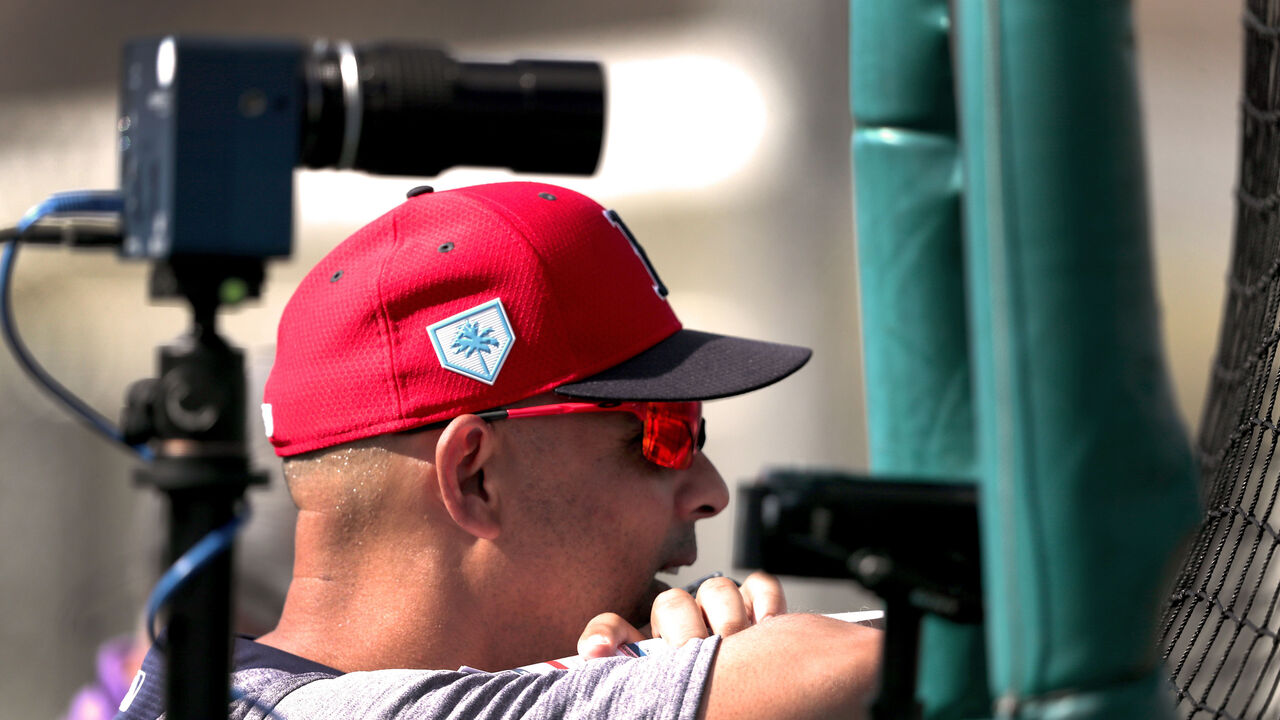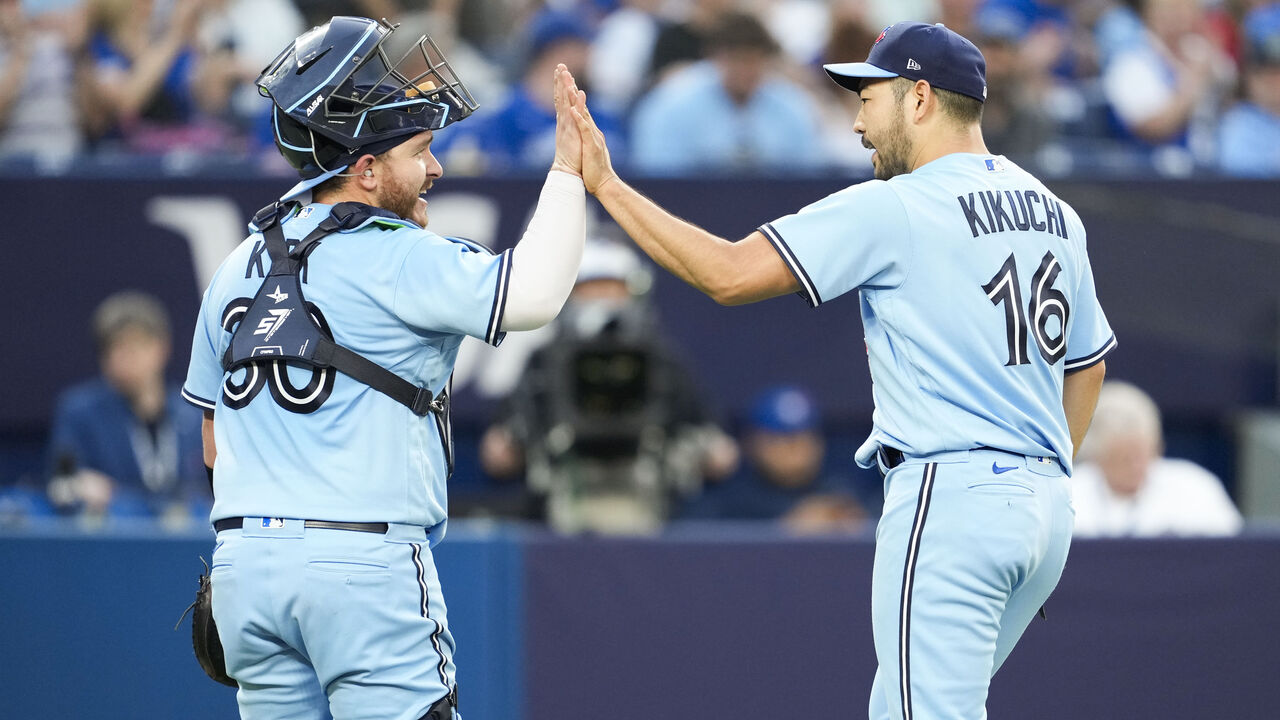Spencer Strider's already great. Now he's adding a new wrinkle
There's never been a better time to add a new pitch.
The process used to be like grasping around in the dark without a flashlight. It involved searching for the right feel while throwing toss after toss. Today, there's no more guessing.
With high-speed, slow-motion cameras paired with ball-tracking technology, pitchers can get immediate video and data feedback on exactly how a grip adjustment changes a ball's spin, speed, and movement.
Imagine if Mariano Rivera's teammates could have seen Edgertronic camera video of his cutter grip. Sure, not everyone would have had success with it - and Rivera certainly had unique physical characteristics to make the pitch a signature one - but it would have been better understood and possibly copied by others.

The right pitch addition can elevate careers. In the 2010s, Cliff Lee was a rather unremarkable arm until he picked up a cutter. Corey Kluber and the late Roy Halladay become Cy Young winners after pitch-mix changes.
So when Spencer Strider, arguably the best pitcher in the majors today, is adding a curveball this spring, it should grab our attention.
Last year, when Strider finished fourth in National League Cy Young Award voting, he used two pitches to cover 93% of his throws. And they were both hard for their pitch type.
Most starting pitchers need to use three pitches regularly, but Strider's fastball-slider combo was so good he didn't need a third offering.
Last spring, theScore asked Strider about his limited arsenal, and he believed he didn't need another pitch.
"I could throw a curveball with a negative-20(-inch) vertical. I don't know that it would be worth it. It wouldn't induce swings. It wouldn't play off my fastball and slider. It would look terrific on TrackMan, but what would be the point of that?
"You look at (Jacob) deGrom, he has the curveball and changeup, too, but he's throwing both less because the fastball-slider combo is what reduces a hitter's decision confidence the most. That deGrom package with the fastball, a (slider) doesn't even need to have a depth. It just needs to look like a fastball as long as it can. That's all you really need."
Leaning on his two-pitch mix, Strider struck out an MLB-best 281 batters in 186 innings and was the only pitcher to reach 20 wins.
But he's a perfectionist, and he seems to have rethought his approach this winter. He wasn't satisfied with his 3.86 ERA last season, or losing both of his starts to the Philadelphia Phillies in the NLDS.
"He's always looking to add or to get better," Braves manager Brian Snitker told reporters earlier this spring. "I don't think guys like that are ever satisfied."

When Strider was recovering from Tommy John surgery as a college pitcher at Clemson, he used the down year to rebuild his mechanics and move down the mound faster and more efficiently. He changed his diet and remade his body, becoming "Quadzilla." He turned himself into an ace based on his own research and his work with Clemson's strength staff.
He hinted at his new project at Atlanta's fan fest this winter. Expanding on his changeup usage was a nonstarter because of his particular mechanics.
"I think the ceiling for (the changeup) is where it is," Strider said then. "It's never going to be something I can throw 50% of the time. There are other pitches that I can learn, that I have a higher aptitude for, that I might try to learn and that may be a direction that I may move in."
Strider's tossed 14 scoreless innings this spring, striking out 22 batters against four walks. He's mixed in the curve and the overall returns have been excellent.
The pitch shape shows promise. It's more north-south in direction and descent, and a few ticks slower than his slider:
Spencer Strider, 84mph Slider (foul) and 79mph Curveball (swinging K), Overlay. pic.twitter.com/kUY7JK8JQx
— Rob Friedman (@PitchingNinja) March 5, 2024
What could Strider's ceiling be if he gives hitters another pitch to consider?
We were curious about what recent pitch additions have done for starters.
theScore looked at all pitchers who tossed at least 80 innings in 2022 and 2023, a sample of 99 pitchers. Of those pitchers, 18 added new pitches last year.
The results were uneven. On average, those pitchers' ERAs increased by 0.54 runs.
Last year, several new pitches graded out with negative run values: four of the five new sliders, two of the four cutters, both curveballs, and four of the seven split-changeups.
So learning and implementing a new pitch isn't always a magic pill en route to another level.
But what's also interesting is that a new pitch can be unremarkable on its own but still be effective.
Consider Yusei Kikuchi last season.

The Toronto Blue Jays' lefty added a curveball that had a negative run value. But its impact on his other pitches was fascinating.
His fastball and slider improved from negative run values in 2022 (minus-12.7 runs saved above average for his fastball; minus-10.6 runs for his slider). His fastball improved to neutral - 0.3 runs last year - and the slider became an above-average pitch, at 9.6 runs saved above average.
While adding a new pitch certainly wasn't the only aspect of Kikuchi's improvement, it likely played a role in lowering his ERA from 5.17 in 2022 to a career-best 3.86.
The curveball likely made his fastball and slider even more effective because there was another variable for hitters to think about. That's Strider's stated goal.
"My strengths are my fastball and my slider," Strider told reporters early this spring. "So everything I'm doing is trying to help those pitches."
Travis Sawchik is theScore's senior baseball writer.